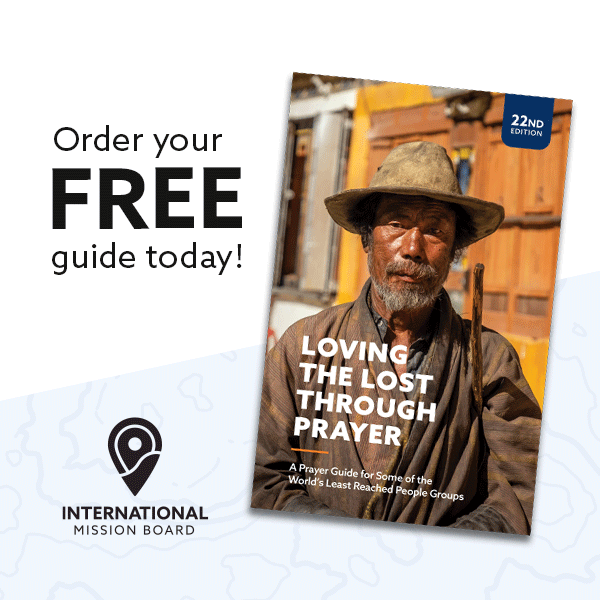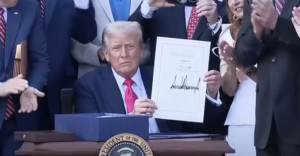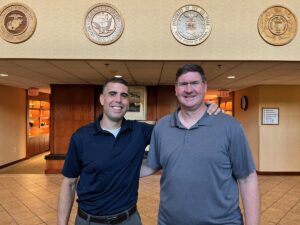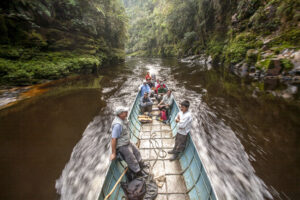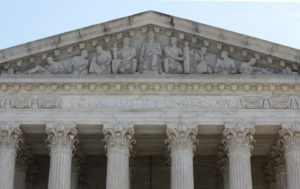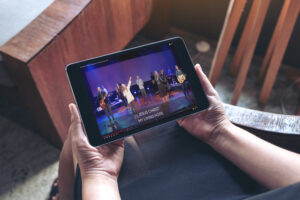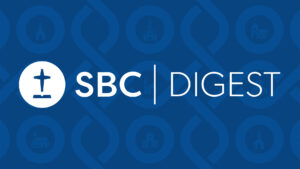
NEW ORLEANS (BP)–The Dead Sea Scrolls are coming to the Southeast.
The Gulf Coast Exploreum Science Center in Mobile, Ala., has been selected by the Israeli Antiquities Authority (IAA) to host the traveling Dead Sea Scrolls exhibit Jan. 20 to April 24, 2005. With assistance from New Orleans Baptist Theological Seminary, the Exploreum will display 12 authentic Dead Sea scrolls on loan from the IAA.
“These are the oldest surviving texts of the Bible … the oldest Bible we have,” said Steven Ortiz, director of the Center of Archaeological Research at NOBTS. “The Dead Sea Scrolls contain excerpts of all the Old Testament books except Esther.
“Many people don’t have the opportunity to go to Israel to view the actual scrolls, and now they are going to be right here in our own backyard,” he continued. “It is a unique opportunity for Christians.”
The exhibit includes seven 2,000-year-old biblical scrolls with the oldest surviving text of Genesis, Leviticus, Numbers, Deuteronomy, Psalms, Isaiah and Jeremiah. The remaining fragments are from sectarian documents found at the Qumran site in Israel. One of 29 Deuteronomy fragments found at Qumran, the one that will be displayed in Mobile, is the only one to include all Ten Commandments.
The scrolls, discovered near the Dead Sea by a shepherd boy in 1947, represent the most important find in the history of biblical archaeology. Excavations at the site uncovered 100,000 scroll fragments stored in clay jars in a desert cave. The discovery and resulting research has confirmed and helped insure the reliability of the Old Testament text found in modern translations of the Bible.
“This event is phenomenal because people can go to the exhibit, look at the scrolls and their English translations; then pick up their Bible and compare the texts…. [T]his brings our Bible back to the time of Jesus,” Ortiz said. “In fact, one of the scroll fragments [Isaiah] is contemporary with the scroll Jesus read from in the Nazareth synagogue where He preached His first sermon [Luke 4:16f].”
The pieces for display in Mobile range in size from small one-inch fragments to a 39-inch-long excerpt from Psalms. Each fragment includes legible, Hebrew text.
While the exhibit made stops in Grand Rapids, Mich., in 2003 and will visit Houston in October 2004, the Mobile stop will be the largest display of biblical scrolls ever shown in the United States. The IAA only allows scrolls to be displayed for three to four months at a time. The scrolls must then return to Israel for 15 months of “rest” designed to preserve the fragile documents.
Officials at the Exploreum are pleased with the scrolls the IAA has chosen to send to Mobile. While only two biblical scrolls were included in the Grand Rapids and Houston tour stops, seven will be displayed in Mobile. Eleanor Kulin, marketing and development director for the Exploreum, said this focus on biblical texts is especially suited for the region.
“This will be an exhibit with broad, mainstream appeal in our area,” she said. “This won’t be a flashy exhibit. It relies on the power of the Word … words that were scribed 2,000 years ago…. [T]hat is the value of this exhibit.”
Ortiz and Dennis Cole, assistant director of the Center for Archaeological Research, jumped at the opportunity to participate in the exhibit when they were approached by the Exploreum.
“The exhibit provides a unique opportunity to highlight the potential we have for the [NOBTS] center,” Ortiz said. “This will lay the groundwork for the research that will be conducted over the next 10 to 15 years by faculty and students at NOBTS.”
The seminary’s involvement includes consulting work in the exhibit design and layout and supplying artifacts to supplement and enhance the exhibit. Ortiz and Cole will assist in the development of lectures and educational programs supporting the event.
Items from the Bible Lands Museum of the Center for Archaeological Research, the John T. Christian Library and the Center for New Testament Textual Criticism at NOBTS will be used in establishing a historical timeline for the main Dead Sea Scrolls exhibit. This includes pottery, biblical manuscripts and a Torah scroll.
As a sponsoring institution, NOBTS and the Center for Archaeological Research have separate exhibit space on the second floor of the museum to display other important items in its collection.
Why Mobile? It’s a question that frequently comes up in discussions about the event.
“Every two years the center brings a major exhibition to the area,” Kulin said. “When we heard about this exhibit, we thought [it is] an important exhibit to bring to Mobile because the Bible has such influence in our area.
“We had to go through extra hoops to convince the Israel Antiquities Authority that we had the wherewithal to care for these documents for 95 days,” she continued. “We passed all their tests and here we are.”
The Exploreum is a nonprofit science museum located in downtown Mobile. Founded in 1998, the museum occupies a $21 million facility complete with interactive exhibits and an IMAX theater. Additional information about the Exploreum and the Dead Sea Scrolls exhibit is available at www.exploreum.net.
–30–
For more information about the Center for Archaeological Research or to contact Ortiz for speaking engagements, call (504) 282-4455, ext. 3249, or e-mail [email protected]. The center’s website is www.nobts.edu/academics/Archaeological%20Center.shtm.



